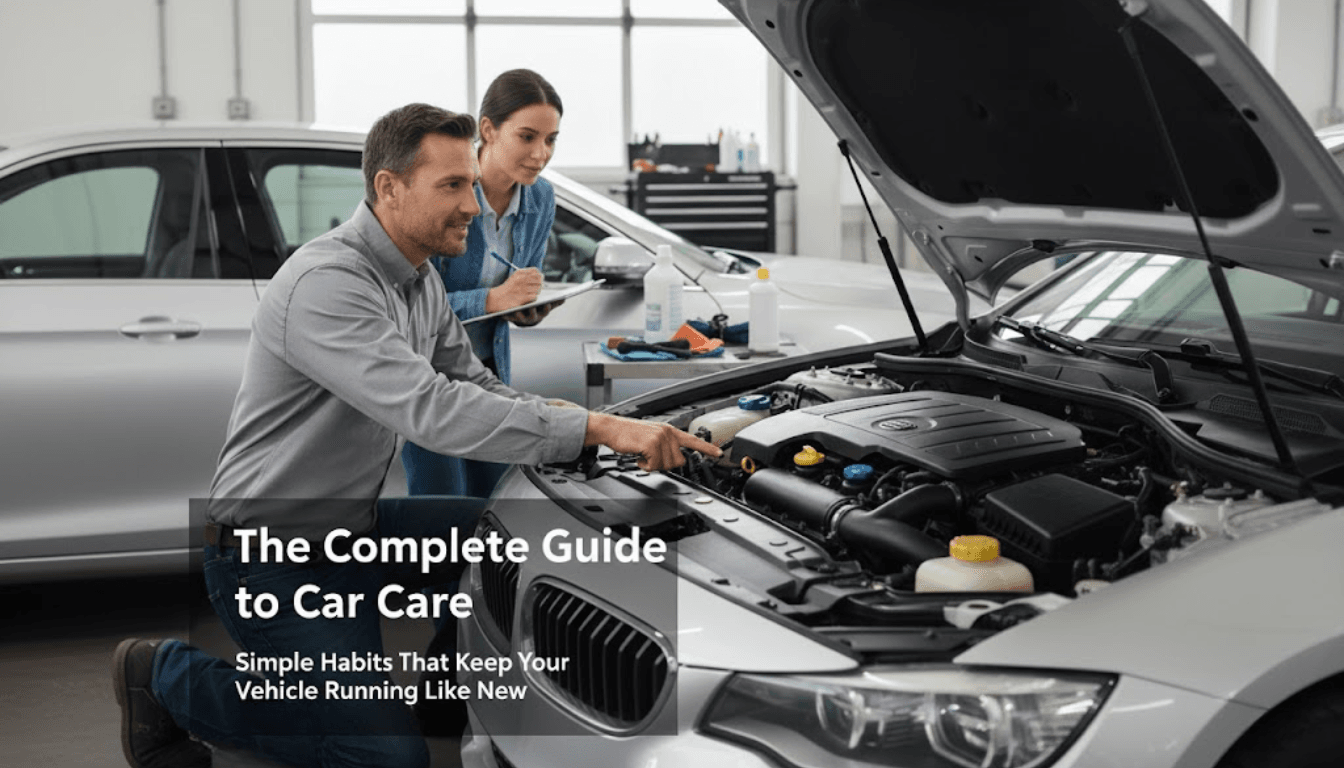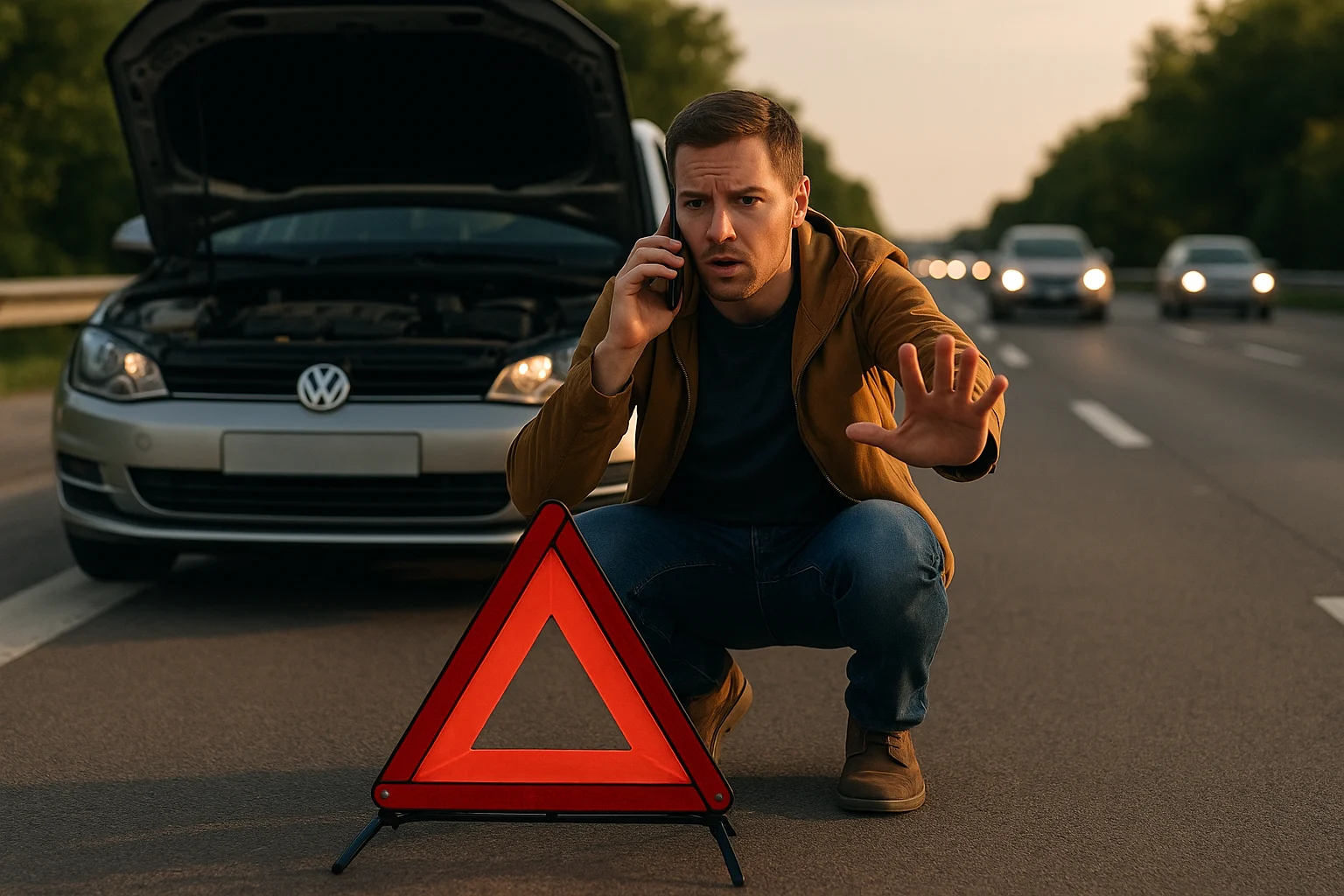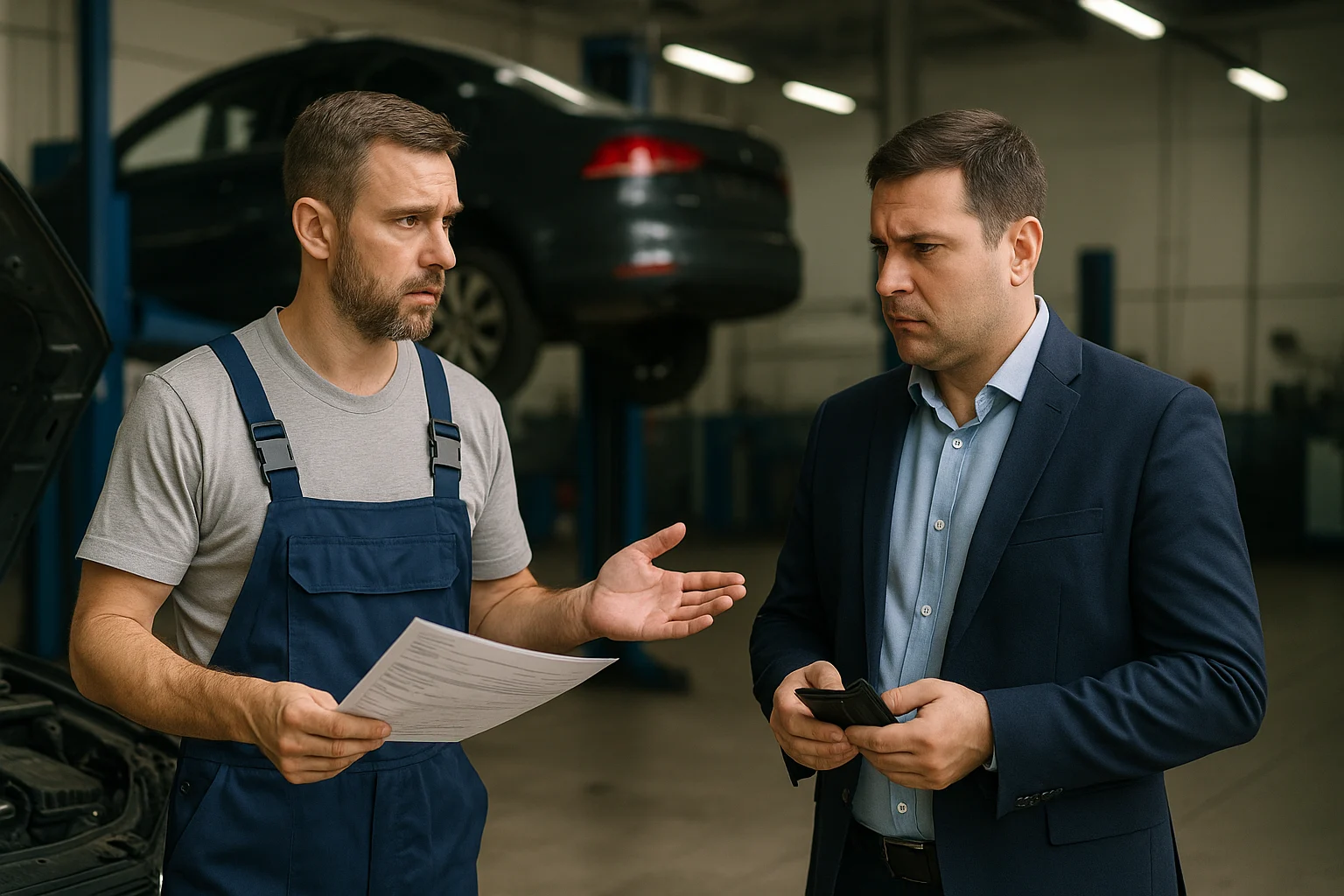Cars are more than a mode of transport from point A to point B; they are an investment, transportation for daily commuting, and for distance driving. While your car plays an important role in your life, most drivers practice car maintenance when the “Check Engine” light comes on, or when an odd noise calls for service. To maintain your vehicle, you do not need to spend money on repairs at a service department, or understand how to read diagnostics as a mechanical engineer. Keeping your vehicle running well is about small, simple, yet consistent habits that can keep a vehicle going for many more years.
This is a well organized reference Guide on car maintenance; it contains practical tips and common sense suggestions for routine service maintenance checks you can complete yourself to help keep your vehicle performing like new.
1. Regular Maintenance: The Foundation of a Healthy Car
Like regular health checkups, you will want to get timely services on your car to keep it running properly. Every car has a manufacturer’s maintenance schedule typically located in the owner’s manual; it gives a list of what maintenance must be done and when to change the oil, filters, belts, and fluids. Following all the manufacturer’s recommendations will help to alleviate major breakdowns and keep the vehicle running efficiently.
Oil Changes:
Engine oil is the lubrication for all the moving parts of your engine. Over time oil will break down and collect debris that can endanger engine components. For example, oil changes in most vehicles will be scheduled somewhere between 8,000–10,000 kilometers, or as otherwise directed by the manufacturer.
Filter Replacements:
Oil filters, air filters, and fuel filters trap dirt and debris contaminating these systems. A dirty air filter will reduce mileage; a dirty fuel filter will impact acceleration. Replace these filters on time to ensure your engine is breathing freely.
Fluid Levels:
Coolant, brake fluid, transmission fluid and windshield washer fluid are all important for performance and safety. By checking the fluid levels once a month, you’ll be able to identify fluid leaks before the system is low and prevent possible overheating due to low coolant or brake failure due to low brake fluid.
2. Keep It Clean – Inside and Out
A clean vehicle is not merely a visual enhancer, but also shields the vehicle from damage. Dirt, mud, and road grime will deteriorate paint and underbody parts if not examined regularly, if not cared for are quickly responsible for damage.
Cleaning Exterior:
Routine washing removes dirt & contaminants from the vehicle’s paint surface, which can damage it. Use a car shampoo, not household detergent, as they are not as hard on the paint. Wax the finish every few months for protection & shine.
Cleaning Interior:
Moisture & dust damage upholstery and electronics within the cabin. Keep the interior clean by frequent vacuuming, wipe down services with a microfiber cloth, & clean under your AC vents to eliminate odors. Sunshades shield the dashboard & seats from damage due to ultraviolet rays.
Cleaning Undercarriage:
The undercarriage of your vehicle sits in mud, salt, grime, and dirt through a monsoon or winter drive. A pressure wash every few months will keep underneath your vehicle rust free & its integrity intact.
3. Drive Smart – The Secret to Longer Life
Your driving habits will influence the health of your vehicle. Smooth and mindful driving will reduce wear on your engine, tires and brakes will prolong their lifespan.
Stop Sudden Acceleration and Hard Braking:
Sudden acceleration followed by sudden braking will wear down the nation’s brake pads, tires and engine parts. Instead, accelerate gently and anticipate stopping well in advance of stopping.
Warming Up Your Engine:
If temperatures are on the colder side, let your car idle between 30–60 seconds before you drive. This is so that there is adequate time for oil to circulate around the engine reducing wear.
Monitor Your RPM:
Consistent high revolutions per minute (RPM) strain the engine. Shifting at appropriate times, and sustaining moderate speeds will assure proper fuel economy, as well as less wear.
Also Read: What to Do If Your Car Number Plate Gets Damaged or Lost
4. Tire Care: The Unsung Hero of Vehicle Safety
Since your tires are the only connection between your vehicle and the road, their condition will directly affect your safety as well as steering control and fuel economy. So make sure to:
Maintain The Correct Tire Pressure:
Under-inflated tires will affect your fuel economy and tread wear while over-inflated tires will negatively affect traction. Check your tire pressure every two weeks when tires are cold, and inflate them to the rate suggested by your vehicle manufacturer’s standard.
Have Your Wheels Aligned and Balanced:
Unaligned wheels cause vibration and steering pull, while also wearing your tires more quickly. Have your wheels aligned and balanced every 10,000 km, or if you are observing uneven tire wear.
Tire Rotation:
Your tires should be rotated every 8,000–10,000 km to give them a longer tread life.
Inspect for Damages:
You should inspect your tires for cuts, bulges and foreign objects (for instance; nails) on a regular basis. Early inspection can be the difference between minor repair and a blown tire.
5. Battery Health: The Power Behind the Start
A weak battery can leave you stranded without warning. A car battery lasts 3–5 years on average depending on usage and climate conditions.
Inspect for Corrosion:
Observe the battery terminals for any white, powdery build-up. If you discover any, clean the terminals with a baking soda solution and brush to maintain good electrical contact.
Secure the Battery:
If the battery is not mounted in a secure manner, it will vibrate too much and damage the internal components.
Test it Regularly:
During routine checks, most service centers will check the state of charge on your battery. If you find that your engine is cranking slowly or your headlights/light are dim; it is time to get the battery tested.
6. Listen, Look, and Feel: Trust Your Senses
Your vehicle typically provides faint warnings before a possible major failure occurs. Monitoring these issues can eliminate a very expensive repair problem.
Listen: A noise, such as squealing brakes, rattling, or knocking from the engine, is a warning.
Look: Leakage under the vehicle, warning lights on the dash, or smokey exhaust are other warnings.
Feel: If you start to notice vibration and/or a loss of power or pulling in steering, get your vehicle to a repair shop or trusted mechanic as soon as possible.
7. Don’t Ignore Warning Lights
Today’s vehicles have dashboard indicators to alert the driver to everything from low tire pressure to engine issues. Many drivers think they can ignore these lights – it’s only a glitch, right? These indicators are meant to warn the driver of a potential problem before it becomes serious.
Here are some examples:
- Check Engine Light: This might be due to something simple, such as a fuel cap that is loose, or it could indicate a more serious problem that has to do with the engine.
- ABS Light: This likely indicates a problem with the anti-lock braking system.
- Oil Pressure Light: This indicates low oil levels or a failing oil pump, either of these could be serious for the motor.
- If any of these lights are flashing, or stay on when you restart your vehicle, you need to call or go to a mechanic ASAP.
8. Seasonal Car Care Tips
Each season presents distinct challenges for your vehicle. A few minor adjustments in your maintenance program can protect your car throughout the year.
Summer:
Check the coolant level, check the battery water, and make sure the air conditioner works as it should. When possible, park in shaded areas to prevent paint damage.
Monsoon:
Look at your wipers, tire treads, and lights. Check your underbody coating to be sure it’s adequate to keep from rust.
Winter:
Keep your fuel tank half full to prevent condensation. The engine should be warmed up before taking long drives.
9. Keep Documents and Tools Handy
Owning a properly maintained car isn’t only about its maintenance, but also about your preparedness level. You need to have the essentials papers with you in the car- your insurance papers, registration certificate, pollution under control and a copy of your driving license.
It may also be helpful to keep some basic things like a toolbox, jumper cables, spare tire, tire inflator and first aid kit in the car. You never know when one of these items may come in handy.
10. Build a Relationship with Your Mechanic
A mechanic you trust is like a family doctor for your automobile. If you visit a trusted service center regularly, they will help you identify minor issues while they’re still minor. They will also keep your service records, meaning you will not have to worry about repeating that when you service your vehicle in the future.
Conclusion
Car maintenance is not difficult, it is a habit, and little things like checking fluids, cleaning out the insides, checking tire pressures, and simply being an attentive driver can add years to the life of your car. Think of it this way: your updated car will not only save you money on repairs, but will also provide you with better driving experiences, safer driving, and peace of mind every time you get in the car.
Whether you have a little sporty hatchback, a rugged SUV, or an executive sedan, keeping it “like new” comes down to periodic attention and care. Start small today, and remember that every little bit of care, adds up to a better drives, with the peace of mind, for a smoother and safer tomorrow.





